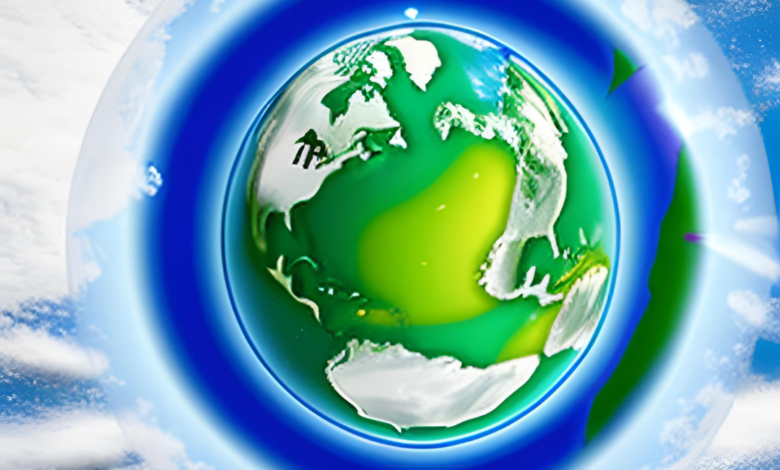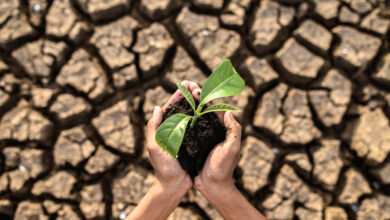World Ozone Day 2023: Protecting Our Global Shield

The significance of the ozone layer, the history of World Ozone Day, interesting facts about ozone, and recent efforts to protect this layer.
Every year on the 16th of September, the world comes together to celebrate World Ozone Day. It serves as a reminder of the critical role that the ozone layer plays in safeguarding life on Earth and the importance of preserving it.
The theme for the World Ozone Day, 2023 is — ‘Montreal Protocol: Fixing the ozone layer and reducing climate change‘.
Understanding the Ozone Layer
The ozone layer is a region of the Earth’s stratosphere, located about 10 to 30 kilometers above the Earth’s surface. It contains a relatively high concentration of ozone (O3) molecules, which are formed when oxygen molecules (O2) are exposed to ultraviolet (UV) radiation from the sun. This natural process creates a layer of ozone that acts as a shield, absorbing and filtering out the majority of the sun’s harmful ultraviolet rays.
UV radiation is known to have harmful effects on living organisms, including humans. It can cause skin cancer, cataracts, and other health problems, as well as damage to ecosystems and crops. Without the ozone layer, life as we know it would be significantly threatened.
Interesting facts about Ozone
- Ozone was first identified by Christian Friedrich Schonbein, a German-Swiss chemist, in the year 1839.
- Schonbein coined the term “ozone” from the Greek word “ozein,” which translates to “to smell.”
- The ozone layer possesses the capability to absorb up to 98% of the sun’s harmful ultraviolet (UV) rays.
- In 1985, a hole in the ozone layer was detected over the Antarctic region.
- The depletion of the ozone layer was attributed to substances known as chlorofluorocarbons (CFCs).
- The Montreal Protocol, aimed at prohibiting ozone-depleting compounds like CFCs, was officially signed in 1989.
- The standardized method for expressing total ozone levels in the atmosphere is through the utilization of Dobson units.
The History of World Ozone Day
The Vienna Convention for the Protection of the Ozone Layer passed a resolution on March 22, 1985, prompted by the alarming discovery of the ozone layer hole over Antarctica. Subsequently, on September 16, 1987, in response to this resolution, the Montreal Protocol on Substances that Deplete the Ozone Layer was formulated.
In 1994, the United Nations General Assembly established the International Day for the Preservation of the Ozone Layer to honor the signing of the Montreal Protocol.
Challenges to the Ozone Layer
The primary culprits responsible for ozone depletion are a wide array of chemical substances, including but not limited to halons, halocarbons, chlorofluorocarbons (CFCs), and hydrochlorofluorocarbons (HCFCs), that have been released into the atmosphere. Additionally, compounds such as methyl bromide, methyl chloroform, and carbon tetrachloride, which also produce chlorine and bromine, pose a significant threat to the integrity of the ozone layer.
Ongoing Efforts to Protect the Ozone Layer
The most recent update provided by the Scientific Assessment Panel under the Montreal Protocol affirms that the recovery of the ozone layer is progressing as planned. Ozone levels are anticipated to return to their 1980 levels, particularly over the Antarctic, by approximately 2066.
Nonetheless, the efforts and advantages stemming from the Montreal Protocol persist as ongoing endeavors. The Kigali Amendment, an addition to the Montreal Protocol, aims to progressively reduce the production and utilization of hydrofluorocarbons (HFCs). HFCs are potent greenhouse gases that were introduced as replacements for ozone-depleting substances within the cooling industry.

Our planet is experiencing the devastating effects of climate change. Global warming leads to an augmented demand for air conditioning in residential spaces, schools, and workplaces. Concurrently, the expansion of accessible and sustainable cold chains, essential for preserving food freshness and the viability of vaccines, is a crucial component of sustainable development goals.
To ensure the sustainability of this growing demand for cooling, it is imperative to identify safe and environmentally friendly alternatives to HFCs and enhance the energy efficiency of cooling equipment. The implementation of the Kigali Amendment, with its phasedown of HFCs, holds the potential to avert as much as 0.5°C of global warming by the year 2100.
Conclusion
The ozone layer, our planet’s natural sunscreen, is a testament to what can be achieved when nations work collectively to safeguard the Earth’s life-support systems. On this World Ozone Day, let us celebrate our planet’s global shield and recommit ourselves to preserving it for future generations.
With its pioneering climate action platform, The Disposal Company is leading the charge towards a sustainable future in India, enabling brands to go plastic-neutral and carbon-neutral with ease. Discover more here.




